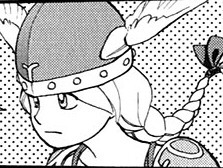This is a revised cross-post from the original article at The Odyssey Online.
On June 12th, 2018, Nintendo revealed the highly-anticipated E3 Super Smash Bros. Ultimate to the world, coming out on December 7, 2018. Masahiro Sakurai, the director of the Super Smash Bros. series, blew expectations out of the water, breaking the internet as he revealed that 65 characters will be playable, which is uncommon in fighting games. There’s no doubt Nintendo achieved its goal of making Ulitmate gaming's equivalent of Avengers: Infinity War.
Hold on, how does a video game compare to the most popular movie of the year? Simple, by being the biggest crossover ever. Ultimate brings together gaming's most iconic characters, a couple of which go toe-to-toe with Mickey Mouse in terms of brand recognition. After all, in what other games can you play an eight-player match with legends like Mario, Pikachu, Pac-Man, Cloud, Sonic the Hedgehog, Ryu, Snake, and Mega Man? Such has been made possible by nearly two decades of building a prestigious franchise.
That's right; Super Smash Bros. has been around longer than the Marvel Cinematic Universe. The first title, called Super Smash Bros., was released in 1999. Its concept is fans play twelve of their favorite characters, like Mario, Link, Pikachu, Donkey Kong, Samus, and Kirby. The game became an instant hit, selling over five million copies and scoring a glowing reception with gamers and critics.
The following games continue to improve game play, add more iconic characters—like Bowser, Sonic, and Pac-Man—and sell more than their predecessor. Super Smash Bros. Melee sold over seven million copies while Super Smash Bros. Brawl and Super Smash Bros. for Nintendo 3DS and Wii U sold over thirteen and fourteen million respectively, making the latter two the best-selling fighting games ever. Each game continually built players’ confidence in the franchise's ability to deliver great game play with more amazing characters. All of this lead up to what Nintendo affirms is the ultimate Super Smash Bros. game.
Nintendo, not being complacent, topped even its fantastic Smash 3DS and Wii U’s offerings. Advertising itself as "The Biggest Super Smash Bros. game ever," it handsomely delivers by bringing back all sixty-three previously-playable characters from the past games. While most people expected cuts, certainly not everyone to return, Nintendo exceeded expectations by addressing the fans’ concern about characters never coming back to another game.
The two unique newcomers for this game, Inklings and Ridley, are heavily fan requested characters. Inklings star in the massive Splatoon franchise, which has sold a combined ten million copies and generated a huge fan base which allowed it to become an unprecedented success.
Fittingly called "The Cunning God of Death", Ridley takes out Mega Man and Mario, twirling the latter's hat to taunt his nemesis Samus Aran. ~ Image still from Nintendo's Super Smash Bros. Ultimate trailer on Ridley
Ridley is the iconic antagonist of the Metroid franchise, his existence being the main driving force behind Samus' adventures throughout the series. Sakurai declined him a playable spot in the last two Smash game, expressing concern regarding whether or not he would work as a character. Yet Ultimate shows that, despite two previous rejections, fan demand finally got Ridley in. His inclusion, along with Snake's return and Ultimate trending on Twitter on the same day as E3, shows the incredible strength of the Super Smash Bros. series and Nintendo brand. To further show how impressive Nintendo’s marketing is, they managed to present clone-like characters in a positive light.
For those who don’t know, clones are characters who share similar move sets with other cast members. For example, Dr. Mario is on the roster in Melee, Smash 3DS and Wii U, and Ultimate but plays mostly like Mario, with only a few key differences. Ever since Melee, many fans have complained that clones prevent the inclusion of unique characters, even though the former take much less time to develop than the latter.
Subsequently, Nintendo has branded Ultimate’s clone characters as “echo fighters,” who are even more similar to their original counterparts than clones were in Melee. In fact, it’s implied that echo fighters share the exact same stats with their counterparts to the point where they occupy the same slot on the character-select screen. For example, Lucina and Dark Pit from Smash 3DS and Wii U are considered echoes of Marth and Pit, respectively. Nintendo even highlighted that Daisy will be Peach’s echo, all the while considering her a newcomer nonetheless. Fans have praised echo fighters and have actually called for more of them to be included in order to increase the number of newcomers. This positive reception is due in part to Sakurai’s new advertising approach, which frames the echo fighters as new features rather than red-headed stepchildren of original characters.
Nintendo’s marketing for Super Smash Bros. Ultimate is putting it on the path to be the best-selling fighting game ever, making both marketers’ and fans’ dreams come true.
Images above have characters owned by Nintendo, HAL Laboratory, Inc., Pokémon., Creatures Inc., GAME FREAK inc., SHIGESATO ITOI, APE inc., INTELLIGENT SYSTEMS, Konami Digital Entertainment, SEGA, CAPCOM CO., LTD., BANDAI NAMCO Entertainment Inc., MONOLITHSOFT, CAPCOM U.S.A., INC., and SQUARE ENIX CO., LTD.
Last edited by a moderator:





